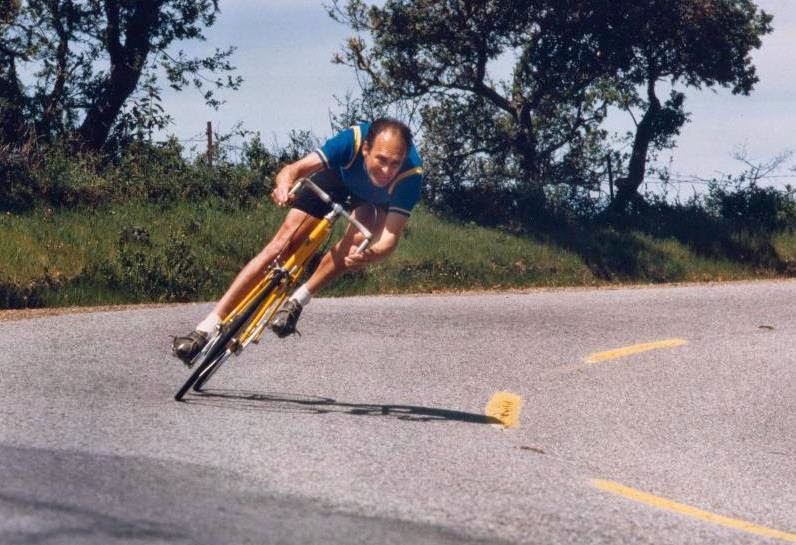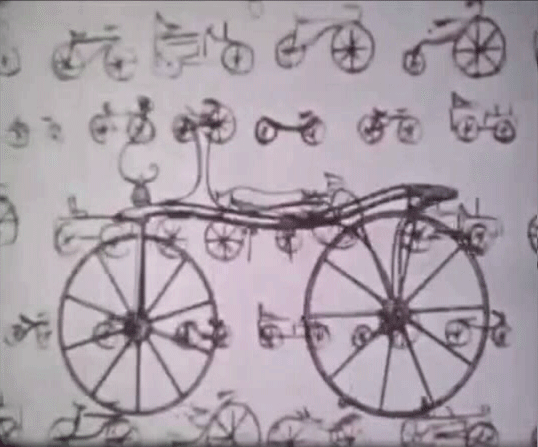Pedal,
kerChunk, pedal,
kerChunk, pedal,
kerChunk.
I could feel and hear the "kerChunk" with each revolution -- every time the pedal rounded the 6 o'clock position. It was a little disconcerting, but I knew exactly what was happening. The curse of Ultra-Torque. I've spent lots of time talking about the problems associated with press-fit bottom brackets, I thought today I'd share another bottom bracket issue, but this time, one which even crops up on threaded systems.
![]() |
The Ultra-Torque crank spindle is comprised of two half-shafts
that are joined together in the middle with a Hirth joint. |
Back around 2006 or so, Campagnolo introduced its answer to Shimano's Hollowtech II BB with outboard bearings - which they dubbed the Ultra-Torque system. Comprised of two half-shafts that join together in the middle with a very cool Hirth joint and a single large-diameter bolt, the system consists of some impressive engineering. Hirth joints require complex machining to manufacture, but they are very strong and are used in things like aircraft engine shafts and turbines. Great -- so what's the problem? In those other high-tech applications, the manufacturing tolerances are much better and more controllable than they are in the bicycle industry. In this application, however, Campagnolo can make its cranks to very tight tolerances, but unfortunately they cannot control the tolerances of the bicycle frames into which they will be installed. That in itself is one of the reasons that press-fit BB systems have been so problematic. Even with threaded bottom brackets, there can be certain variables which can affect fit, but most traditional systems have a means to compensate or adjust for those variables effectively.
![]() |
Here's the non-drive half shaft. It's really a beautifully machined
piece of equipment, but there may be a problem in the application. |
In frames with threaded bottom brackets, the bore of the shell and its threading can be tightly controlled to industry standards. However, the exact
width of that shell can vary ever so slightly. A standard British/ISO bottom bracket shell
should measure 68 mm wide, or 70 mm for an Italian threaded frame, and the faces of that shell should ideally be perfectly parallel. In reality, the width of those shells could vary by a millimeter or more, or by minute fractions of a millimeter. Even in steel frames with investment cast bottom brackets, there can be a slight variation. And it's not always due to a flaw in the manufacturing necessarily. A BB shell that starts off at the proper spec will be narrowed slightly if a facing tool is applied. But in most cases -- in practice -- that tiny difference in width is not a problem. That's why most traditional threaded bottom brackets have at least one adjustable cup. Phil Wood's excellent cartridge BBs have two adjustable cups, and work perfectly well even if the shell faces are not perfectly parallel. Even with Shimano's Hollowtech system, there is a means for adjusting for those tiny variations in width. But the Ultra-Torque has a rigidly defined shaft width with no effective means for adjustment on frames that might not have such exact tolerances.
![]() |
Joined together, the two halves of the Hirth joint look like this,
held together in the middle with a large diameter bolt. |
So, how does the system accommodate tiny variations in frame shell width? By use of a "wave washer."
![]() |
To accommodate slight variations in BB shell width, the
Ultra-Torque system uses this "wave washer." It is less than
ideal for the task. (photo from Park Tool) |
I suppose that washer is supposed to act almost like a spring to keep the system under proper load laterally. In practice, it doesn't seem to be up to the task. When installed into most frames, even those conforming to Campagnolo's defined specifications (their installation instructions listed an acceptable range from 67.2 mm to 68.8 mm for British/ISO frames), one can physically move the crank laterally in the frame. When pedaling, sometimes this movement can present itself, resulting in a "knock" or that
kerChunk that I described earlier. Apparently, Campagnolo's engineers say that this lateral movement is not a problem and that it should not present itself when pedaling. Many rabid Campagnolo fans echo that sentiment, and deny there is any issue. "It's Campagnolo," they'll say -- "how could there possibly be anything wrong?" Some will point to the strength of the Hirth joint, and hail it for its high-tech turbine applications, which is actually irrelevant to this issue. It would be hard to find anybody who is a bigger Campy fan than I am, but realistically, I think there is an engineering problem here.
The issue was first brought to light in 2008 by John Satory, the bicycle mechanic and blogger known as
"RogueMechanic." This guy has been on a one-man crusade about the Ultra-Torque issue, has had several conflicts with Campagnolo over it, and has even received hate mail about it.
The thing is, it's quite possible that some people would never notice a problem when riding. If a frame's actual width measures at the wider end of the acceptable specifications, it's possible that the lateral movement would be negated. Maybe some people have such unbelievably smooth pedal strokes that it never presents itself on the road. It's also possible that some people aren't as sensitive to the knocking and therefore don't notice it. Or perhaps some notice it, but don't know to what to attribute it (I've seen where people have attributed the problem to bad bearings, pedals, shoes/cleats, and more).
I installed the Ultra-Torque crank and bottom bracket onto one of my bikes some time back. I was impressed by the engineering, and what seemed to be an unbelievably simple installation (no bearing adjustment whatsoever). After a couple thousand miles, I started to detect that
kerChunk. I asked a local mechanic about it, and learned that Campy was aware that some people might have that issue (though apparently, they still consider it a non-issue) and suggested using a second wave washer to solve it. We tried that, and it seemed to settle the problem. I could still produce the lateral movement of the crank when the bike was on the stand, but it did not seem to present itself when riding -- for a while, that is. A couple more thousand miles, and I started to notice it again. Faintly at first. Gradually, it got worse. Pedal,
kerChunk, pedal,
kerChunk.
![]() |
| The Ultra-Torque shim kit, from RogueMechanic. |
Researching it online, I discovered the
RogueMechanic site and figured out the reason for what I was sensing. Luckily, Satory had come up with a good, solid solution to the problem. Get rid of the wave washer, and instead use shims to properly space the bearing cups to eliminate the lateral play. He has had
shim kits made that he will install for his clients, or which he
sells online for home mechanics. The shim kit consists of 2 shims each in 1.0 mm, 0.5 mm, 0.2 mm, and 0.1 mm. I purchased the shim kit for $45 and watched his video instructions on how to best install them. I'm glad I watched the video, as there is a definite system to determining the best combination of shims that would eliminate any lateral play, but at the same time, did not cause any binding. Installing the shims wasn't difficult, but it was time consuming, and I'll add that having a pair of digital calipers is really helpful. Even with the calipers, there is still a fair amount of "trial and error" to determining the best number and combination of shims. Ultimately, I ended up using about 1.2 mm worth of spacers to eliminate play, which is just a shade (not a technical term) thicker than the pair of wave washers that I removed from the setup. Since the operation, out on the road, the crank feels like it should, with no knocking. No clicking. No
kerChunks. We'll see how it holds up over time, but I have to say that RogueMechanic's assessment of the problem seems spot on to me, and I'm convinced the solution is correct as well.
![]() |
It's a little tough to see, but that's the left-side Ultra-Torque
cup with about 1.2 mm of shims. |
It's worth pointing out that press-fit bottom brackets aren't the only ones that present problems that
shouldn't be problems, though it's also notable that Shimano's Hollowtech BB system has more adjustment designed into it. But luckily, with the threaded frame and cups, it seems to me that fixing the problem is at least fairly straightforward. I can also say that I'm glad I don't have the press-fit version of the Ultra-Torque. Perhaps one could still make adjustments for width using shims, but I can only imagine that press-fit would only compound the issues. Still, when I think about the fact that I've got a Phil Wood bottom bracket on my Rivendell with about 15 years and I-don't-even-know-how-many miles on it (still feels as slick as butter), could somebody remind me exactly what was wrong with a good old fashioned square-taper bottom bracket?














































